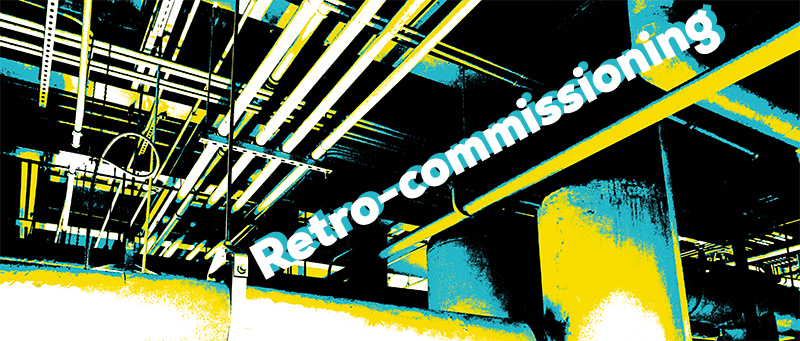Retro-commissioning: Restoring Energy Standards
-
Category
Studio-K12, Innovation -
Posted By
Bill Gruen -
Posted On
Mar 28, 2022
When older buildings start losing their luster, it might be time for a retro-commissioning study (RCx) to ensure internal systems are running efficiently.

What is retro-commissioning?
An RCx study is the first stage in a building upgrade process. It involves studying the performance of HVAC, lighting, and building controls systems while comparing them to a building’s original design intent. Benefits include improved indoor air quality, better thermal comfort, greater productivity and safety, extended equipment life, reduced energy costs, and a reduced need for repairs and warranty claims later.
Schmidt Associates is an approved AES RCx Study provider, which means we can conduct studies, walk Owners through the study process, and recommend repair options that can be made with contractors and suppliers, often in little time, and with big returns. Owners not only benefit with an updated, energy-efficient building, but also with a rebate check and annual energy savings.
How energy efficiency saves money for Wayne Township
For taxpayer-supported buildings like older K-12 schools, the energy savings and rebates should be welcomed news, especially when budgets are already tight in many districts. Such was the case for the Metropolitan School District of Wayne Township, who worked with Schmidt Associates in 2021 to undergo an RCx study for the Lynhurst 7th and 8th Grade Center on Indianapolis’s west side. Built in 1969 and renovated in 2004, the school is approximately 280,000 square feet with classrooms, offices, a gymnasium, cafeteria, and pool.
“With an expectation that our schools would remain efficient and utility costs rising with older systems, we knew we needed to do things to save on operating costs at Lynhurst,” said MSD of Wayne Township Director of Operations Todd Hendricks. “When the Schmidt Associates’ engineering team told us about the RCx study and the benefits we could possibly get, it just made sense for us to do it.”
Following the study, energy-saving opportunities were identified and implemented including:
- An air handling unit (AHU) schedule adjustments to significantly reduce the units’ weekly run times.
- A hydronic valve night setback adjustment to close the AHU hydronic heating valves during unoccupied times.
- Installing VFDs on the pool AHU supply and return fans.
- Repairing an AHU return air damper to restore proper unit operation to the return and outdoor air dampers.
- Reducing DHW circulation pump runtime during off hours.


“The upgrades that were made in a short time saved us roughly $57,500 in utility costs per year,” Hendricks said. “The implementation cost of $16,574 was covered by AES Indiana incentives, and AES also paid for the retro-commissioning study.”
As experts in architectural design and energy engineering practices, we love working with Owners to improve building efficiencies while reducing operating costs and restoring performance and function. When the recommendations were accepted by the District, the facilities team was able to work directly with contractors to implement changes quickly that further jump-started savings within the District. We often reference our commitment to servant leadership at Schmidt Associates. This is a prime example.








